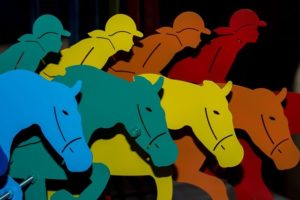Is Ben Curtis stable jockey to Mark Johnston?
Although only in seventh place in the 2021 Flat Jockeys’ Championship, which is decided on winners between May 1 and October 16, Ben Curtis has made quite an impression since moving to Britain from his native Ireland in 2013. Born in Kinsale, County Cork on August 5, 1989, Curtis shared the Irish apprentices’ title with Joseph O’Brien and Gary Carroll in 2010 and, in Britain, has ridden over 50 winners in each of the last eight seasons. Indeed, he has ridden over 100 winners in the last four seasons and, in 2020, rode 170 winners in the calendar year, which was more than any other jockey in the country.
Interviewed in January, 2021, Middleham trainer Mark Johnston stated that Curtis would ride ‘more and more’ for his Kingsley Park yard during the year, although he was keen to point out that he does not have a formal arrangement with any jockey. He said, ‘…’the last formal retainer I had with any jockey was Kevin Darley [who retired, at the age of 47, in 2007], and that ended in about 2006.’ Johnston habitually uses the best jockeys available but, in recent years, has relied principally on Joe Fanning and Franny Norton, both of whom turned 51 during 2021. Consequently, he is keen to forge a relationship with a younger jockey who can take the place of one, or both, when they do eventually retire. In 2021, so far, Johnston has supplied Curtis with 48 winners from 284 rides at a strike rate of 17%.
 In November, 2009, the British Horseracing Authority (BHA) introduced a new rule, which forbade jockeys from remounting their horses, upon pain of disqualification, at any point in a race after the field comes ‘under starter’s orders’. There are no exceptions to the rule, which introduced the possibility of races being declared ‘void’ because none of the runners complete the course unscathed. Indeed, that eventuality occurred for the first time in a novices’ chase at Towcester in March, 2011, when all four runners fell or unseated rider.
In November, 2009, the British Horseracing Authority (BHA) introduced a new rule, which forbade jockeys from remounting their horses, upon pain of disqualification, at any point in a race after the field comes ‘under starter’s orders’. There are no exceptions to the rule, which introduced the possibility of races being declared ‘void’ because none of the runners complete the course unscathed. Indeed, that eventuality occurred for the first time in a novices’ chase at Towcester in March, 2011, when all four runners fell or unseated rider.